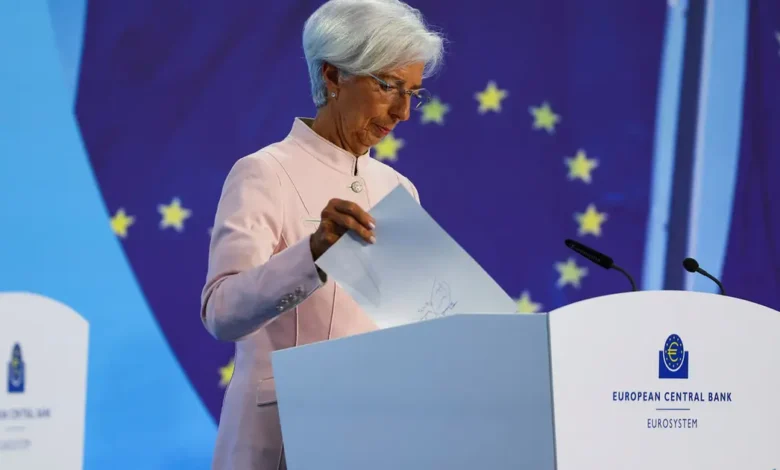Eurozone yields hold steady near recent multi-year highs

Eurozone government bond yields held near multi-year highs on Tuesday as the prevailing narrative that global central banks would keep interest rates “higher for longer” continued to drive price action.
Germany’s 10-year government bond yield, the euro area’s benchmark, was last little changed on the day at 2.789 percent, having briefly hit a 12-year high of 2.813 percent in early trade. Bonds yields move inversely with prices.
The policy-sensitive two-year yield was also little changed at 3.219 percent.
After raising the deposit rate to a record 4 percent earlier this month, policymakers from the European Central Bank have provided different interpretations of recent guidance, with some arguing that the next move will be a cut and others saying the chance of another hike could be close to 50 percent.
ECB President Christine Lagarde on Monday said that interest rates held at current levels will make a substantial contribution towards getting inflation down towards their target of 2 percent over the medium term.
Pricing in derivative markets shows a less than 20 percent chance of another rate hike from the ECB, but a rate cut is not priced in until July next year.
“The overall message from the last two weeks is that it seems the hiking cycle has come to an end, but that central banks will keep rates higher for longer,” said Jens Nærvig Pedersen, director, and rates strategist at Danske Bank.
“Oil prices have been on the rise and natural gas prices in Europe are creeping higher again so that might fuel concerns about renewed inflationary pressure.”
Brent crude futures hit their highest level in 11 months last week, while Dutch and British wholesale gas prices hit multi-week highs on Monday after an extension to Norwegian maintenance outages.
Italy’s 10-year yield was last up 2 basis points (bps) at 4.675 percent, hitting its highest level since October. This pushed the closely watched yield gap between Italian and German 10-year bonds to 188 bps, its widest level since May.
Analysts said the ECB putting more focus on reducing excess liquidity could be adding to pressure on peripheral bond markets, while the debate about shrinking the ECB’s balance sheet was also likely to have an impact.
“Tighter liquidity could have implications for the periphery and may be part of the reason why the spread is going wider,” Danske Bank’s Pedersen said.
Markets also needed to digest increasing government bond supply, with issuance expected from Germany, Austria, the Netherlands, and Italy on Tuesday, according to UniCredit analysts.
Meanwhile, investors were watching a rise in US treasury yields with the benchmark 10-year earlier hitting its highest level since 2007 at 4.566 percent.










